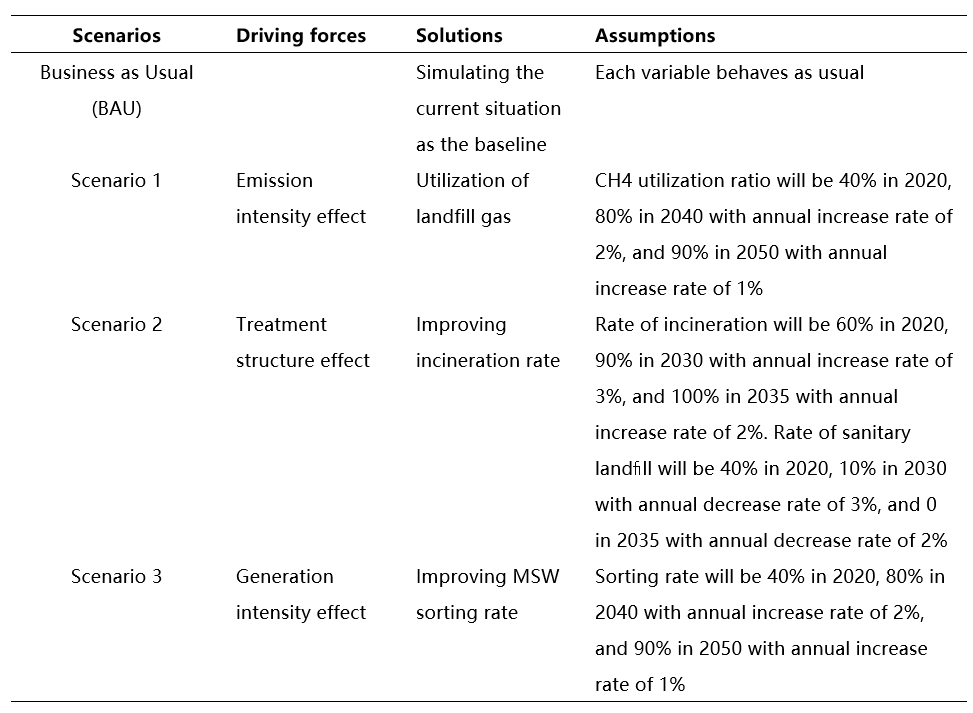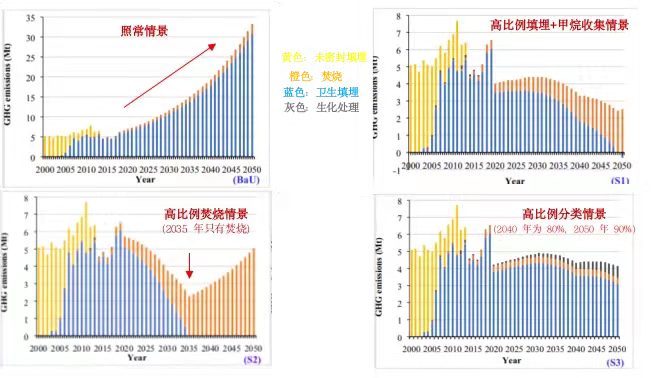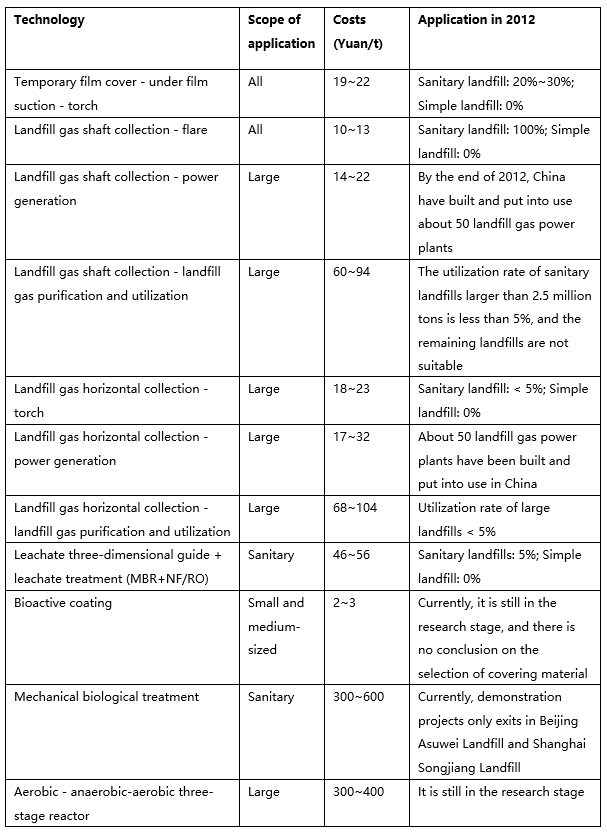

At the COP26 summit that ended in early November, more than 100 countries, including the United States and the European Union, signed the Global Methane Pledge that represented half of global methane emissions. The proposed goal is to reduce global methane emissions by at least 30% compared to 2020 levels by 2030 [1]. Though some major methane emitters, including China, India and Russia, have not yet joined the pledge, the joint declaration issued by China and the United States in the last days of COP26 made it clear that they will strengthen cooperation on methane emission control and plan to hold a joint meeting in the first half of 2022 to focus on specific measures to enhance emission reductions, including the adoption of standards to reduce methane emissions from fossil fuels and waste industries, as well as incentives and programs to cut emissions from agriculture [2]. Domestic methane emission reduction from the energy industry have been previously mentioned in China's environmental agenda [3], this joint declaration however, incentivized China to develop a national-level action plan on methane emission reduction, as well as act as an opportunity to deepen the cooperation between China and the United States to respond effectively to non-energy related methane reduction, namely those sources from municipal waste and agriculture. This analysis paper focuses on methane emission reduction from waste management, and analyzes the key progress needed by reviewing recent progress in climate negotiations and related research.
Methane emission control (from waste management) prospects out of the national-level action plan
Globally, nearly 20% of methane emissions come from waste treatment, mainly from landfilling of solid waste and anaerobic digestion of wastewater. However, that number is about 12% for China, less than the global average level. Though China's main challenges in controling methane emissions are from energy and agriculture sectors, accounting for 40% or more, but with the increase of waste generation, different waste treatment methods will result in different levels of methane emissions in the future, which the author estimates will reach 20%, the global average level.
In the press conference held by the Ministry of Ecology and Environment on November 25th of 2021, the leader of the Department of Climate Change said that the national-level methane action plan was under formulation, which would mainly consider five aspects: Thorough Investigation, Formulation of Relevant Standards, Strengthening Monitoring and Accounting, Encouraging Pilot Studies and International Cooperation [4]. Among them, "Promoting the Introduction of China's Methane Emission Control Action Plan" is the most relevant, especially the following three aspects of waste methane control:
1.Emphasizing the establishment of emission reduction policies, technologies and standards for waste management and other fields.
2.Strengthening methane emission control and recycling in waste management and related fields;
3.Revising the management methods and relevant methodologies for voluntary GHG emission reduction mechanisms, and supporting qualified methane emission reduction projects to participate in voluntary GHG emission reduction trading.
These three aspects embody the current methane control pathway from waste management, while it looks like it may focus on the use of technology and market mechanism to control methane emissions, but the key is still the first point of the three, which emphasizes the need for policy changes. This introduces the main problem from waste GHG emissions management: climate change has not yet been recognized as an important consideration for municipal governments when deciding specific waste treatment methods, which significantly affects GHG emissions such as methane. Current emissions data is presented by national or provincial emissions inventory using the traditional calculation methods.
The first key point of waste methane emission reduction: Designing waste management systems from the perspective of greenhouse gases emission control
European countries had an early start in controlling waste greenhouse gases emission and have achieved significant emission reduction results. By reviewing the experiences from Germany and the UK, the reduction strategies of European countries can be generally summarized to a few key areas: relying on source reduction and strengthening the recycling ratio to prevent further waste generation, especially organic waste (biodegradable material), supplemented by effective waste recycling systems and the application of incineration technology. So far, some member countries has already prohibited landfilling untreated organic waste [5]. It's clear that cutting the source of biodegradable materials flowing into landfill sites is an effective way to control greenhouse gases emission for European countries [6]. In this case, choosing the appropriate combination of waste management methods can not only ease environmental problems such as greenhouse gases emission and landfill leachate pollution, but also promote the recovery of available resources.
Domestically, referring to scenario analysis on greenhouse gases emission form Shanghai municipal waste management (figure 1), helps us to better understand obstacles Chinese mega cities are facing in waste management. Currently, when considering climate impact, it's important to weigh the pros and cons of landfill or incineration in solid waste management, where landfill is dominating. Policies that only consider the end treatment will limit landfill methane emissions (S1), but to encourage overall reduction, policies need to advocate for decreasing source material and classification (S3) associated with landfill methane recovery where there are greater GHG emission reduction potential. The issue on whether waste incineration is lower in carbon emissions will not be discussed in depth here, you may refer to the report "A False Incentive on MSW Incineration" that was published by REEI.
Figure 1: Scenario analysis on greenhouse gases emission from Shanghai municipal waste management


Source: Xiao S, Dong H, Geng Y, et al. Greenhouse gas emission mitigation potential from municipal solid waste treatment: A combined SD-LMDI model[J]. Waste Management, 2021, 120: 725-733.
Notice: Not all six scenarios are shown above, the other two scenarios are Economic development effect and Population scale effect
The second key point of waste methane emission reduction: How to showcase costs and synergies clearly
According to "Global Methane Assessment: Benefits and Costs of Mitigating Methane Emissions", published by United Nations Environment Programme (UNEP), the global waste sector is expected to reduce methane emissions by 29-36 million tons/year by 2030. The emission reduction potential is mainly on solid waste disposal, 60% of the waste emission reduction measures can be achieved at negative or low cost, through methods including waste classification and recycling, avoiding landfilling organic waste, landfill gas recovery, etc. [7]. This also considers the cost of avoiding potential risks to human health and food security due to excessive methane emission, as well as the associated health and food benefits.
By comparing the key technologies of methane emission reduction in landfill sites (Table 1), with the exception of mechanical biological treatment (MBT) and aerobic - anaerobic-aerobic three-stage reactor, most of the emission reduction costs are less than 50 yuan/ton methane. Calculated by referring to current national carbon market quota reference price of 40 Yuan/ton co2-eq, the reference value would be 1120 yuan/ton for methane (methane has 28 times the GWP of carbon dioxide on a 100-year scale), which means it's reasonable as long as the cost of methane emission reduction is below this value. Currently, the cost of methane emission reduction is less than one tenth of carbon market quota reference price, though climate factors are considered on landfill methane recovery in the future, it will still be a cost-effective option. As a result, it may not be necessary to rely on the carbon market to meet the cost demand for methane recovery of current landfill stocks and potential incremental landfill emission reduction, but simply increasing waste management charges with consideration of the climate cost included. Referring to synergistic gains mentioned in the UNEP report, combined cost of landfill methane emission reduction and management should actually be lower.
Table 1: The cost estimation and application condition of the key technologies of landfills

Source: 蔡博峰,刘建国,倪哲,高庆先,胡秀莲.中国垃圾填埋场甲烷减排关键技术的成本和潜力分析[J].
Conclusion
As the largest methane emitter, China's methane emissions of 1.5 billion tons of CO2-equivalent may continue to rise in the future. Currently, signals of methane emission reduction at home and abroad are quite clear. Both the Global Methane Pledge and the US-China climate cooperation have pointed to accelerating methane control through international cooperation and national commitments as an integral part of global greenhouse gases emission reduction. The Ministry of Ecology and Environment has recently confirmed that a national-level action plan for methane reduction is under development, as well as showcased five aspects for reference in formulating the plan. We've paid special attention to methane emissions from waste management, which is growing fast though its proportion is still small. This analysis paper also gave some advice on methane emission control in the future through literature review at home and abroad, especially considering the climate change cost of waste management and its synergy gains, and climate factors in the waste management policy system.
Note:
[1] Global Methane PledgeOfficial Website. Link: https://www.globalmethanepledge.org
[2] 中美关于在21世纪20年代强化气候行动的格拉斯哥联合宣言。生态环境部,2021-11-11。链接:https://www.mee.gov.cn/xxgk/hjyw/202111/t20211111_959900.shtml
[3] 解读|中美强化气候行动,甲烷减排从科学共识走向政治共识。澎湃新闻,2021-11-11。链接:https://www.thepaper.cn/newsDetail_forward_15332884
[4] “甲烷国家行动计划”如何起步,环境部列出“五步走”。腾讯网,2021-11-25。链接:https://new.qq.com/omn/20211125/20211125A056RR00.html
[5] 董文娟,孙铄,李天枭,杨秀,李政.欧盟甲烷减排战略对我国碳中和的启示[J].环境与可持续发展,2021,46(02):37-43.DOI:10.19758/j.cnki.issn1673-288x.202102037
[6] 垃圾填埋场:温室气体减排新战场,2018/10/9,科学网。链接:http://news.sciencenet.cn/htmlnews/2018/10/418430.shtm[7] Global Methane Assessment: Benefits and Costs of Mitigating Methane Emissions, Link: https://www.unep.org/resources/report/global-methane-assessment-benefits-and-costs-mitigating-methane-emissions
[7] Global Methane Assessment: Benefits and Costs of Mitigating Methane Emissions, Link: https://www.unep.org/resources/report/global-methane-assessment-benefits-and-costs-mitigating-methane-emissions
Author:Lin Jiaqiao
Translation: Chen Shikai
Proofread: Pan Yiren & Yuan Yating
This article is an original article of the Rock Environment and Energy Institute. Please contact us to obtain the appropriate authorization to reprint. For cooperation and authorization, please send an email to: liying@reei.org.cn
* This is the translation of an article in Chinese. Should there be any inconsistency between Chinese and English version, the Chinese version shall prevail.




